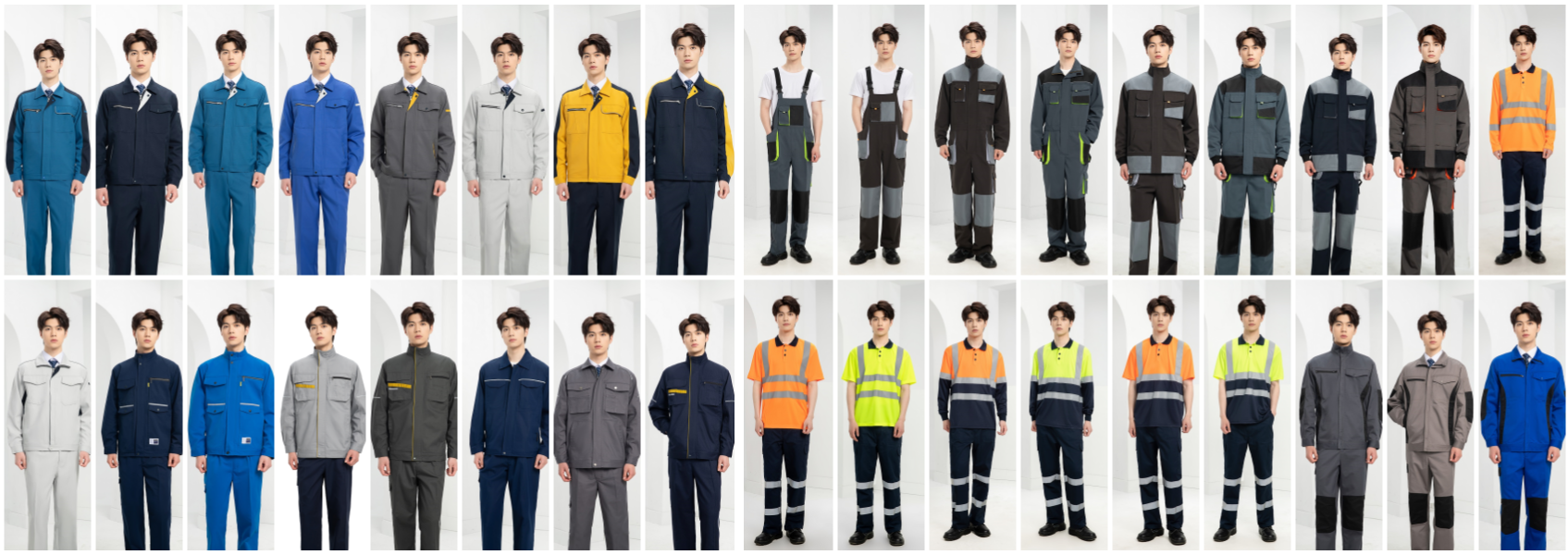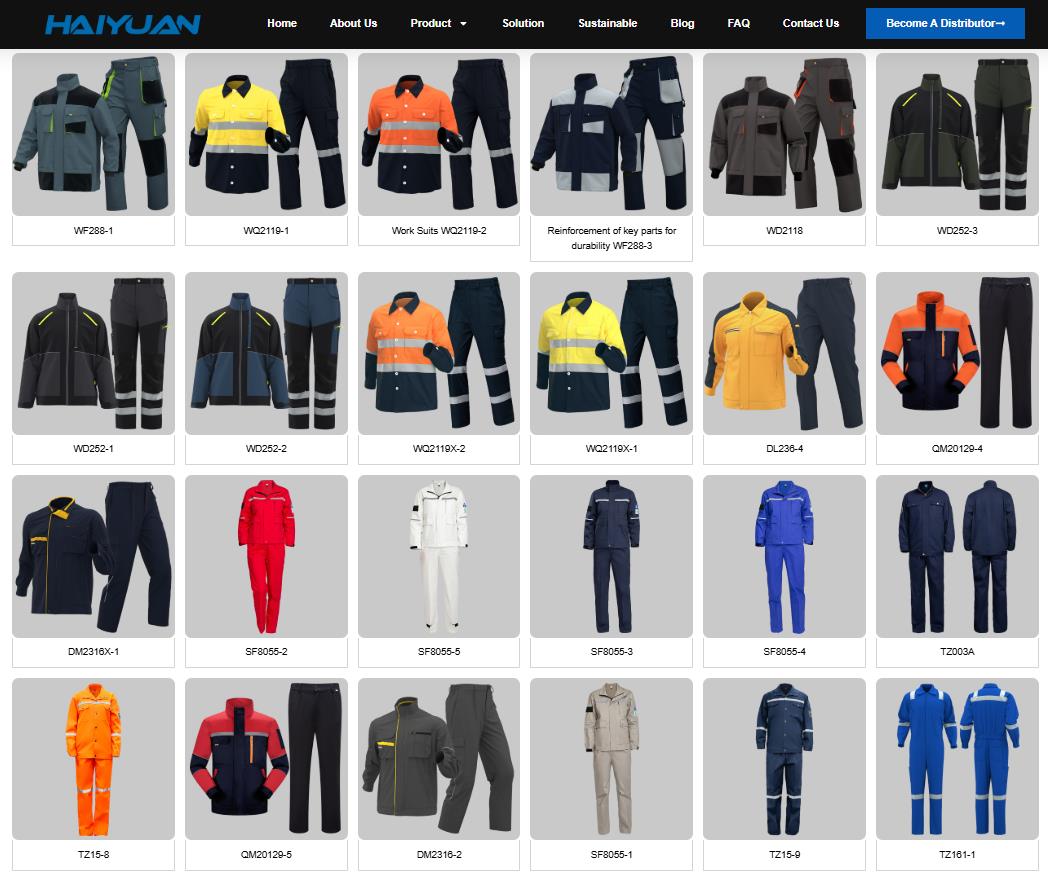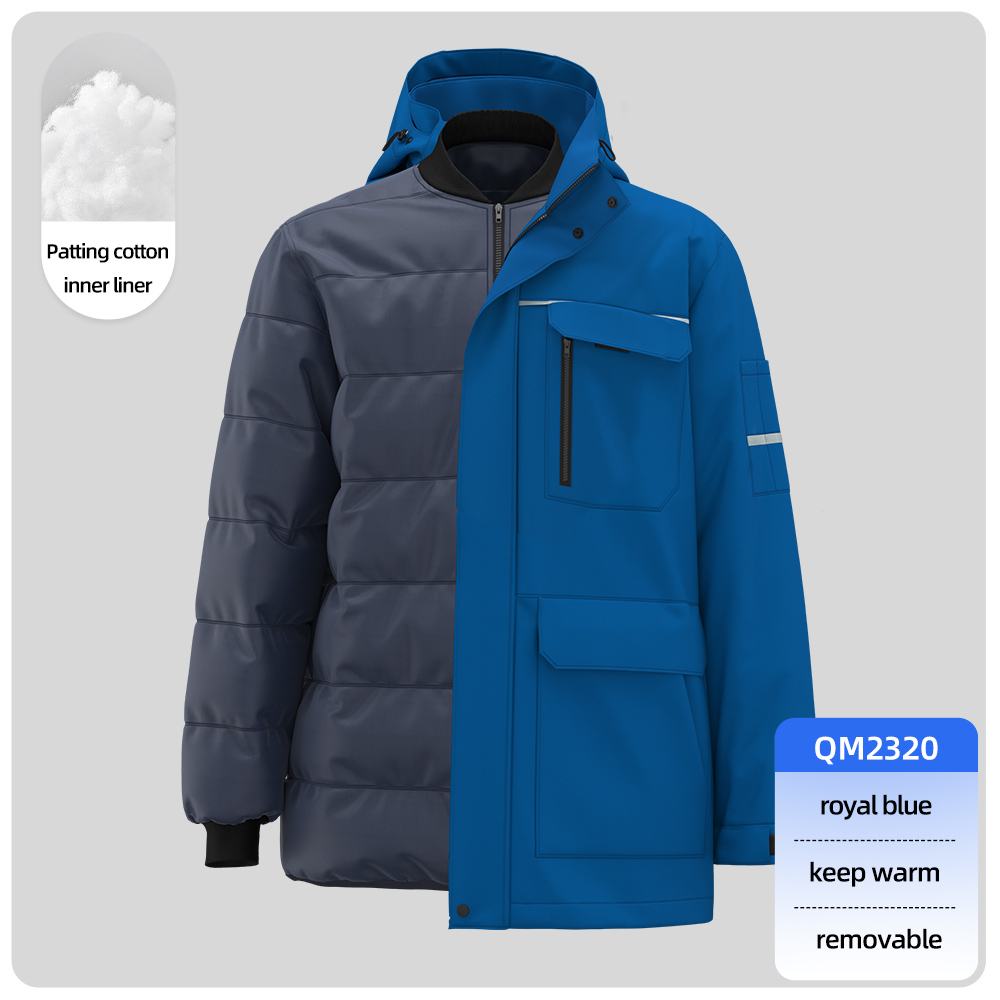An industrial worker uniform is a specialized category of workwear designed explicitly for the safety, functionality, and durability required in industrial environments like factories, warehouses, construction sites, and manufacturing plants.
These are not simple outfits; they are integrated Personal Protective Equipment (PPE) systems.
What Makes an Industrial Worker Uniform?
The core principle is protection. Every element is chosen to shield the worker from specific workplace hazards.
1. Key Components & Their Purpose:
-
Primary Clothing:
-
Fire-Resistant (FR) Shirts and Pants: Made from special materials (e.g., Haiyuan, Kevlar blends) that self-extinguish. Critical for workers exposed to flash fires, electrical arcs, or sparks (e.g., welding, oil & gas, utilities).
-
Coveralls: One-piece garments that provide full-body coverage from dirt, grime, and limited chemical exposure. Often made from durable cotton or polyester-cotton blends.
-
High-Visibility (Hi-Vis) Apparel: Shirts, vests, and jackets in fluorescent yellow-orange with reflective tape. Mandatory for anyone working near traffic, forklifts, or in low-light areas.
-
-
Foot Protection:
-
Safety-Toe Boots: The most critical item. Features a reinforced toe cap (steel, composite, or aluminum) to protect against crushing injuries from heavy falling objects.
-
Additional Features: Often include puncture-resistant midsoles, slip-resistant soles, metatarsal guards, and electrical hazard (EH) rating.
-
-
Head Protection:
-
Hard Hats (Helmets): Designed to protect the head from impact, falling objects, and electrical shocks. Classifications (Type I for top impact, Type II for top and side impact) and electrical ratings (Class G, E) are crucial.

polyester cotton labor workwear
-
-
Hand Protection:
-
Work Gloves: Highly specific to the task. Types include:
-
Cut-Resistant: For handling sharp metal or glass.
-
Impact-Resistant: For machinery and hammering.
-
Heat-Resistant: For welding or forging.
-
Chemical-Resistant: For handling solvents and oils.
-
-
-
Eye and Face Protection:
-
Safety Glasses: Must have side shields for general impact protection.
-
Goggles: Provide a secure seal against chemical splashes or dust.
-
Face Shields: Used in conjunction with safety glasses for grinding, welding, or handling chemicals.
-
-
Hearing Protection:
-
Earplugs or Earmuffs: Essential in environments with loud machinery to prevent long-term hearing damage.
-
2. Key Features of the Fabric:
-
Durability: Made from heavyweight, tightly woven fabrics like duck canvas or denim to resist abrasion, tears, and repeated washing.
-
Functionality: Often feature tool pockets, reinforced knees, hammer loops, and pen slots.
-
Comfort: Despite being heavy-duty, modern fabrics incorporate breathability and stretch for mobility and moisture-wicking to keep the worker dry.
-
Compliance: Fabrics must meet specific safety standards (e.g., ANSI/ISEA for hi-vis, NFPA 2112 for FR clothing).
Why is This Uniform System So Important?
-
Injury Prevention: Directly reduces the risk of catastrophic injuries and fatalities.
-
Regulatory Compliance: Employers are legally obligated (by OSHA in the U.S., HSE in the UK, and similar bodies globally) to provide appropriate PPE at no cost to workers.
-
Productivity: Durable clothing allows for freedom of movement and carries necessary tools, enabling workers to perform their tasks efficiently.
-
Corporate Identity: Even industrial uniforms can be branded with company logos, fostering team spirit and a professional image.
Summary: A Typical Industrial Worker Uniform System
| Component | Example Items | Primary Hazard Protected Against |
|---|---|---|
| Core Clothing | FR Shirt/Pants, Hi-Vis Vest, Coveralls | Fire, Arc Flash, Visibility |
| Head Protection | Hard Hat | Impact, Falling Objects, Electricity |
| Eye Protection | Safety Glasses, Goggles | Flying Debris, Splashes |
| Hand Protection | Cut-Resistant Gloves | Cuts, Abrasions, Impacts |
| Foot Protection | Steel-Toe Boots | Crushing, Punctures, Slipping |
| Hearing Protection | Earplugs, Earmuffs | Loud Noise |
In essence, an industrial worker uniform is a head-to-toe protective system. It is a non-negotiable requirement for safety in some of the most demanding work environments on earth. When sourcing these uniforms, one must always start with a thorough workplace hazard assessment to select the right components.





